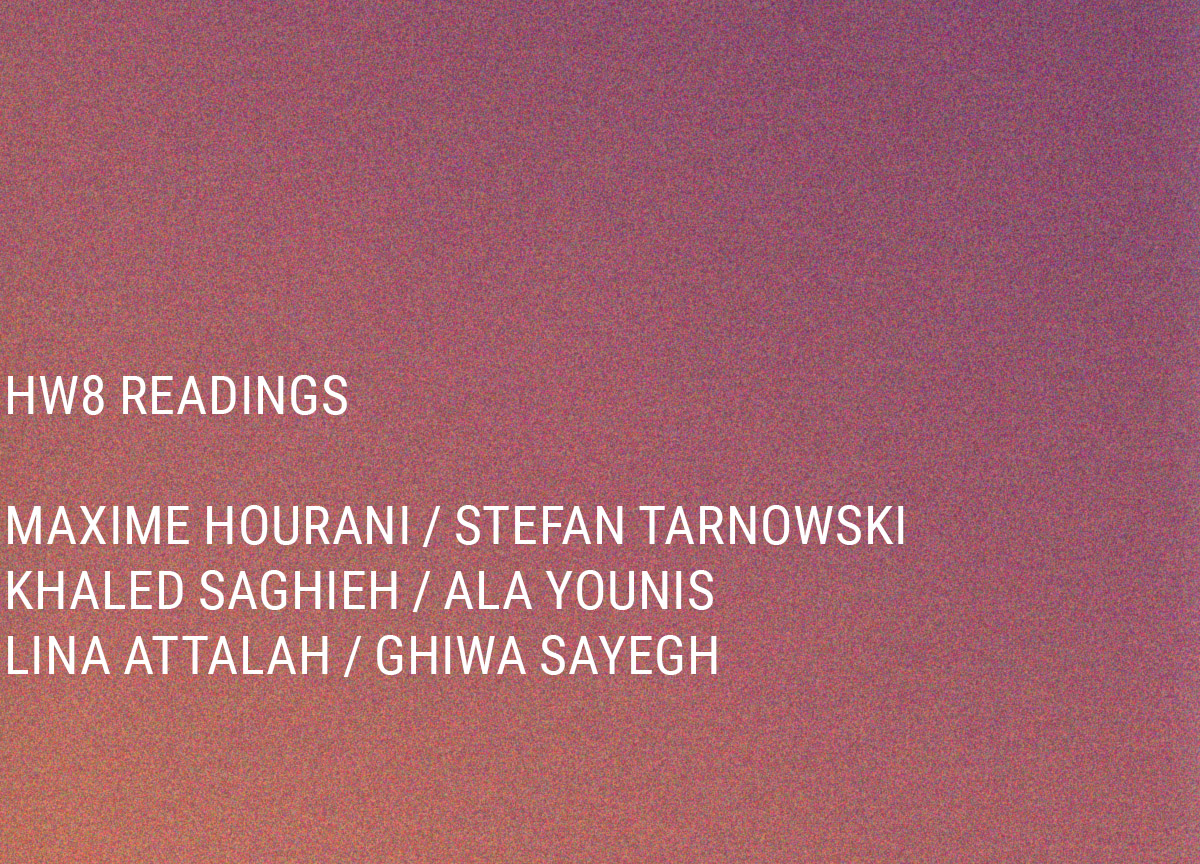Sunday, October 20th, 2019 | 6:30pm at Sursock Museum Auditorium
a few big images by Stefan Tarnowski
This reading follows the circulation and re-circulation of a particular YouTube clip from Syria. In doing so, researcher Stefan Tarnowski plots the actors and forces involved in its production and circulation. He describes the correlation between the changing historical circumstances of the war in Syria and the shifting assumptions regarding the effectiveness of media technologies—from the discourse that they form the conditions of possibility for technology-driven democratic revolution to the subsequent discourse that social media undermines the very possibility of democracy. In lieu of the fluctuation between optimism and pessimism regarding these infrastructures and technologies, Tarnowski suggests that the clips being produced and circulated are a form of commodity. In doing so, contra media materialism and the forensic method, he also proposes that we understand their materiality in terms of the always unequal social relations involved in their production and circulation.
Stefan Tarnowski is a writer, researcher, and translator. He is currently a PhD candidate at Columbia University’s Anthropology Department and the Institute of Comparative Literature and Society. His research investigates technological infrastructures and practices in Syria since the 2011 revolution. He graduated from Oxford University in Middle East Studies in 2010. He previously worked at Beirut Art Center (2010-13), and was a participant of Ashkal Alwan’s Home Workspace Program 2012-13. He has also worked as a research assistant for a number of artists and filmmakers. He recently translated and wrote the introduction for Dork Zabunyan’s The Insistence of Struggle (IF Publications, 2019).
The Anthropology of Nature in a World Without Us by Maxime Hourani
In the mountains of Lebanon, the boundaries of an ancient forest are found inscribed on rocks, forming the Lex Hadriana. This first recorded environmental law was originally ordered by Roman emperor Hadrian and put four types of trees under his imperial protection. This precedent gave the trees a legal personhood yet failed to articulate a biocentric view where the rights of nature are recognised outside of a resource extraction value system. In a speculative survey grounded in the negation of a universal nature, the remnants of the forest in the valley of Nahr Ibrahim are subject to planetary scenarios where a world without us is understood through the geontological continuities and discontinuities of nature.
Maxime Hourani (b. 1982, Beirut) is an artist and architect who works with time-based media. He explores in his work the poetics and politics of land transformation while locating affective encounters between the history of nature and the nature of history. Hourani’s works were shown in group exhibitions at Tensta Konsthall (2019), Malmö Konstmuseum (2017), Jerusalem Show VII (2014), the 13th Istanbul Biennial (2013) and the Beirut Art Center (2013). He was in residency at the Badischer Kunstverein (2018), the Delfina Foundation (2014), and the Scottish Sculpture Workshop (2014). He participated in Ashkal Alwan’s Home Workspace Program 2012-13 in Beirut.
This event is part of Home Works 8: A Forum on Cultural Practices.









